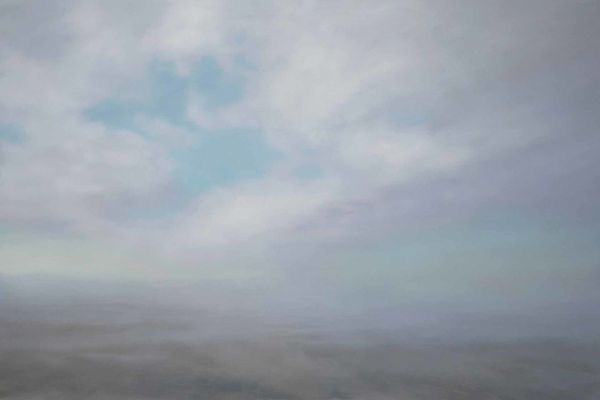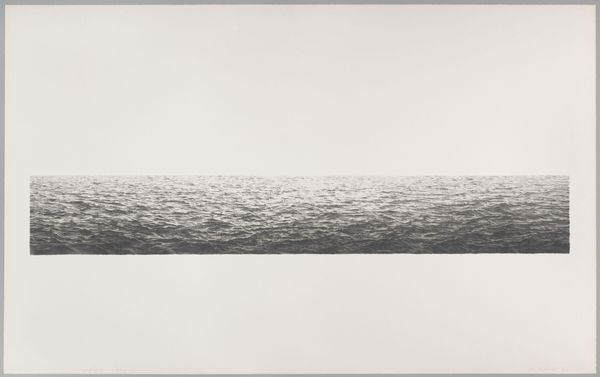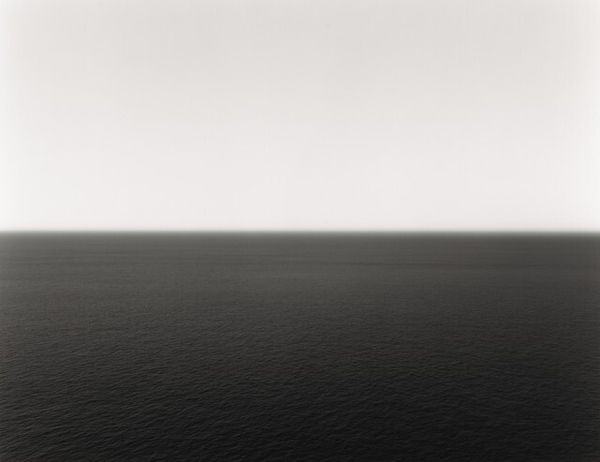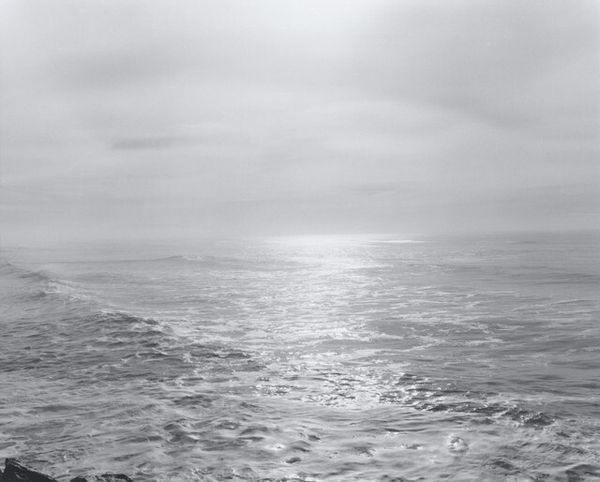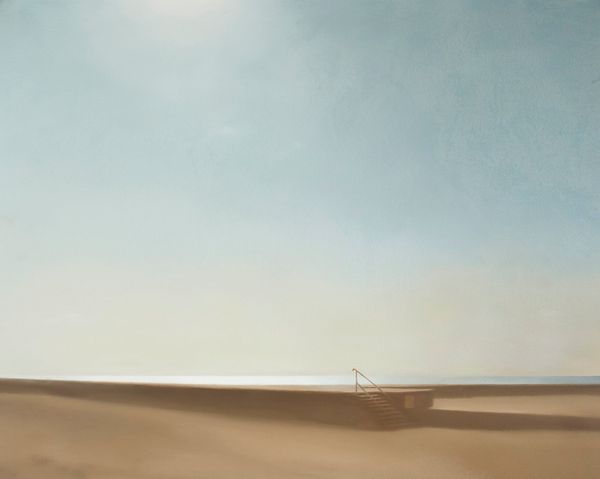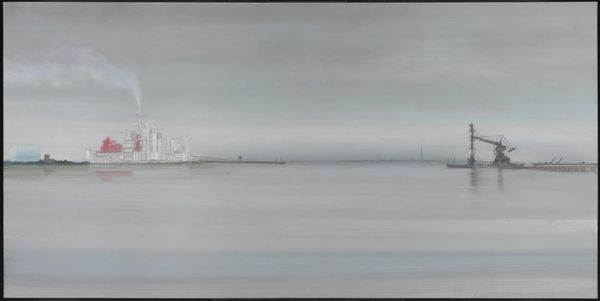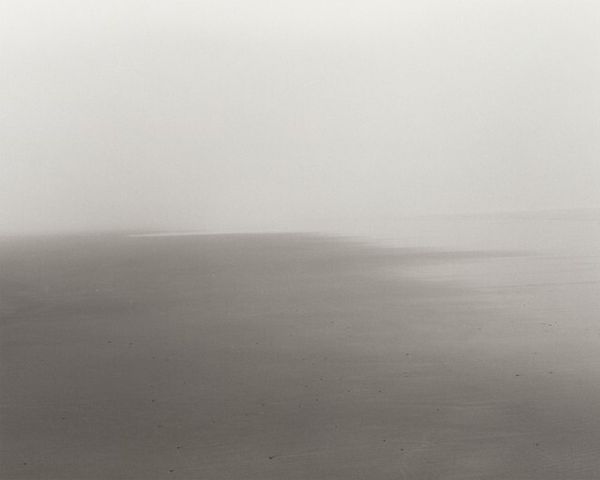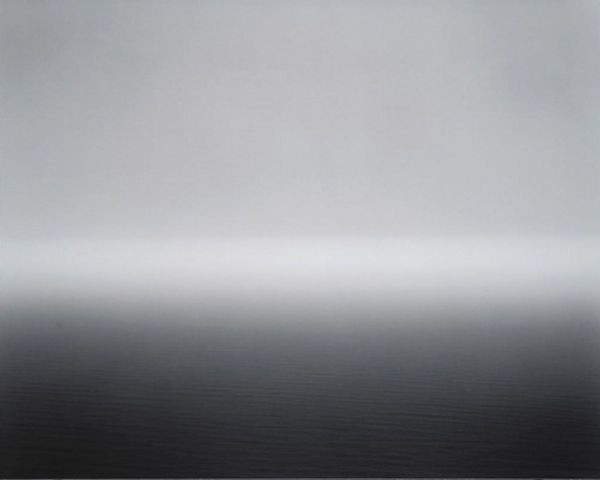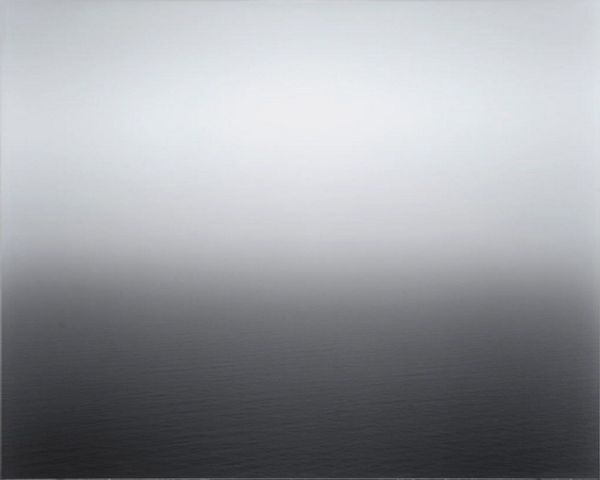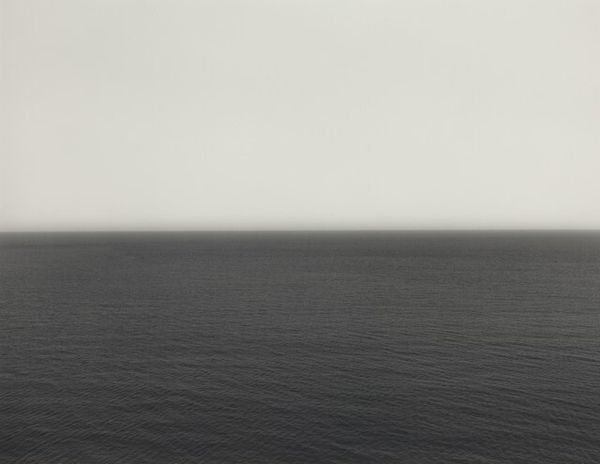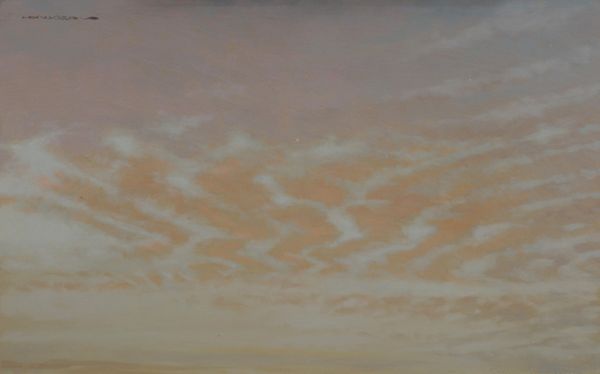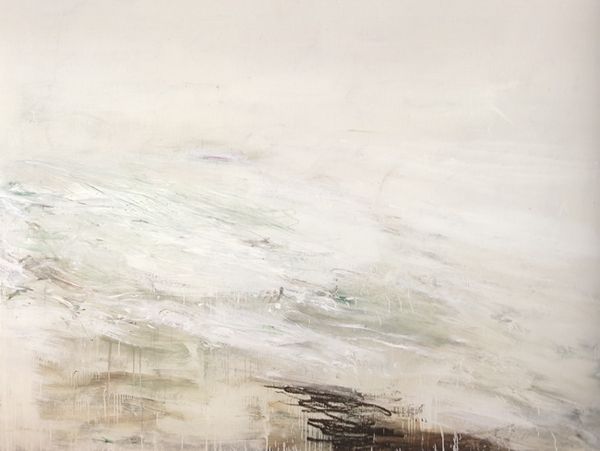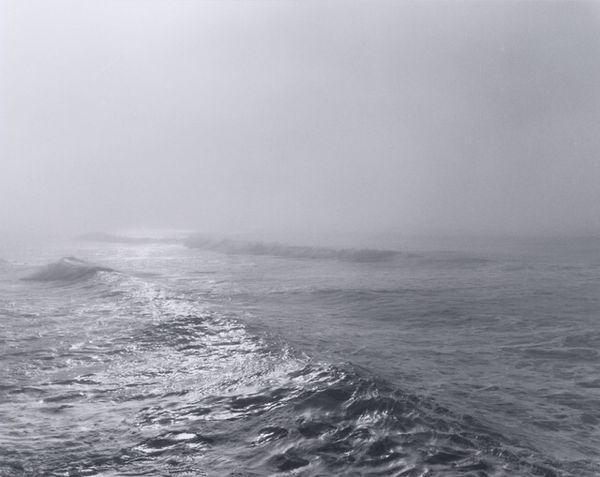
#
capitalist-realism
Copyright: Modern Artists: Artvee
Curator: Brrr… it makes me shiver. The vast, indistinct sea… like all my anxieties condensed into paint. Is it me, or does it just radiate uncertainty? Editor: It's extraordinary, isn't it? This is Gerhard Richter's "Seestück," or "Seascape," painted in 1969. It's an oil painting, of course, and very characteristic of his explorations of landscapes around this period. Curator: 'Explorations' feels right. It's as though he's not trying to capture the sea, but the *feeling* of the sea… vast, empty, kind of terrifying if you really let yourself sink into it. Like staring into the void but the void is… damp. Editor: It’s quite indicative of his unique approach, using blurred or "smeared" effects, playing with photographic realism but abstracting at the same time. What’s compelling to me is its relationship with the romantic ideal of landscape painting while subtly subverting it. It seems to question the idea of sublime nature, perhaps mirroring the societal anxieties of post-war Germany? Curator: Absolutely. And you know Richter; he's got this incredible ability to balance the conceptual with something deeply, almost embarrassingly, emotional. That blurring… it’s like the sea itself is uncertain about its own edges, about what it is. Which then gets me thinking about personal identity, national identity after trauma… it all kind of bleeds together. Literally. Editor: Yes, trauma. In my view, Richter avoids overt symbolism, leaning more toward atmospheric representation. In this respect, it gives him the possibility to channel emotional experiences while maintaining critical distance. In Germany, especially, in that period of time, this work was very well perceived. Curator: You've got me thinking now, whether the ocean’s neutrality is just an accidental theme here. After all, the sea’s always been that place we look for answers from – freedom, solace, escapism - while reflecting our moods. But yes, this isn't your picturesque postcard seascape. It's loaded, somehow. It has such great power of expression, don't you think? Editor: Indeed. The seascape in 1969 might not be perceived as an adventurous or politically disruptive style, but if seen in today's world of overwhelming imagery it is an image we can certainly identify with as one of isolation. A reminder of humanity’s vulnerability, perhaps? Curator: Okay, now you’re bumming me out! Still, such a privilege getting lost with Richter, to be pulled under the tide by art, as always! Editor: Indeed!
Comments
No comments
Be the first to comment and join the conversation on the ultimate creative platform.
